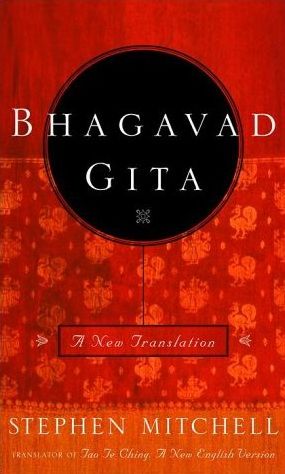(For next week please read Chapters 10 and 11, pages 121-143, in which the Gita suddenly
launches into extraordinary poetry to help our hero come to terms with the
infinite wonder of the universe.)
Near the end of last week’s fascinating discussion about science vs. religion, I wrote the following to a supporter of the scientific view:
Ah, the beauty of Yoga.
One can take a scientific view of the universe,
like yours,
or a divinity view
like Graham Schweig’s,
and still end up in pretty much
the same blissful place.
The bliss can be seen
as the release of certain chemicals in the brain,
as in your view,
or a personal love affair with God,
as in Schweig’s view.
The Gita doesn’t really care.
Both of you are experiencing
the infinite unfathomable wonder of the universe
first hand.
The ancient Yoga sage(s) who wrote the Gita recognized that different people would need different types of Yoga to match their personality types.
People who are primarily analytical in nature might feel most comfortable with Jnana Yoga, or the Yoga of Knowledge. They like to think and philosophize about Yoga.
People who are primarily people oriented might be most attracted to Karma Yoga, or the Yoga of Action, which emphasizes selfless giving and compassion.
People who are highly emotional in nature might prefer Bhakti Yoga, or the Yoga of Love and Devotion, which emphasizes love, sacred chanting, mantras, and devotional kirtan music.
Finally, people who are what psychologists call “drivers” might tend towards Raja Yoga, or the Yoga of Meditation, as exemplified by the progressive spiritual attainment of the Yoga Sutra.
None of this is meant to pigeonhole people. We all have aspects of all these types within us. But most people have what psychologists call a “dominant style.” And, according to the Gita, all of these paths lead to the same place–a deep awareness of the infinite wonder of the universe.
I was surprised by how closely the types of Yoga in the Gita correspond to modern personality theory. It’s almost an exact match. The ancient Yoga guys figured out thousands of years ago that there are different Yoga strokes for different Yoga folks.
How do you blend these different types of Yoga in your practice?
Do you identify with any particular one of them?
Any additional discussion of Chapter 9 is also welcome.
Please see
Welcome to Gita Talk
for all Gita Talk blogs and general information.
Jump in anytime and go at your own pace.








Read 34 comments and reply